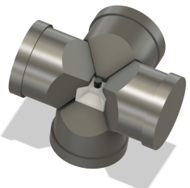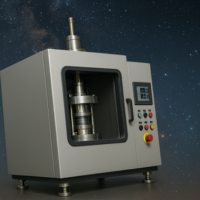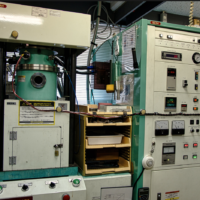Space Seed Holdings Inc. Begins R&D on Next-Generation SPS Equipment with Okayama University of Science
Space Seed Holdings Inc. (Head Office: Minato-ku, Tokyo; CEO: Kengo Suzuki, hereinafter “the Company”) has commenced technological development on next-generation Spark Plasma Sintering (SPS) equipment in partnership with Okayama University of Science (Location: Okayama City, Okayama Prefecture; President: Hiroyuki Hirano). This initiative advances foundational research on the “Next-Generation SPS Equipment,” for which the Company filed a patent application in March 2025. The research will be conducted at Okayama University of Science in collaboration with Professor Yoshihisa Mori, whose expertise is central to the project.
Scientific Background and Technical Challenges
SPS is gaining attention as a process enabling powder material sintering at low temperatures and in short durations, with expanding applications in advanced materials fields, particularly for nanostructure control and creating materials under non-equilibrium states. However, conventional SPS devices are limited by pressure capacity, typically ranging from 0.1 to 0.15 GPa (with a maximum of 0.5 GPa), imposing physical constraints on exploring new phases or processing hard-to-sinter materials.
Traditional high-pressure synthesis methods (belt-type presses)* face challenges such as large scale and high costs, creating demand for evolution in SPS technology that can simultaneously achieve extreme synthesis environments and precise heating control on a global scale.
*Note: The belt-type high-pressure synthesis method is a device designed to create high temperature and high pressure conditions used in diamond synthesis and various materials R&D. It consists of paired anvils and a surrounding belt component that compresses a high-pressure cell containing the sample to generate the desired environment.
In March 2025, with the cooperation of Professor Mori, the Company completed a patent application for a next-generation SPS device. The invention proposes an innovative anvil cell structure* that enables sintering at ultra-high pressures of approximately 10 GPa—previously difficult to achieve with conventional SPS equipment—thus providing a new approach to materials synthesis technology. This project aims to establish foundational technology with an eye towards future social implementation and industrial application.
*Anvil cell structures are high-pressure generating mechanisms developed for material synthesis and physical property measurement under extreme conditions. They sandwich a sample between opposing hard anvils to uniformly apply high pressure.
Technical Overview and Innovation
Led by Professor Mori, this project targets the world’s first implementation of a next-generation SPS device integrating the Palm-type cubic anvil—renowned for high-pressure science and materials research—with SPS technology. The device will feature:
・Discharge sintering capability under a hydrostatic pressure environment of approximately 10 GPa (over 100 times the pressure capacity of conventional devices)
・High reproducibility for high-pressure sintering and phase transition synthesis on minute samples (diameter ≤10 mm)
・Modular and benchtop design enabling distributed research
・High-temperature compatibility and stable current conduction secured through optimized conductive pathways and cell structures
・Potential future add-on applications for existing SPS devices
Application Potential and Prospects for Social Implementation
Upon successful implementation, the device may enable exploration of materials synthesis in previously inaccessible domains such as:
・Ultra-hard materials like nanopolycrystalline diamond, cubic boron nitride (c-BN), and hexagonal boron nitride (h-BN)
・High-heat-resistant ceramics and novel thermoelectric materials
・Transparent conductive oxynitrides and nonequilibrium phase structures for quantum sensors
・High-density electrolytes and next-generation battery materials
The Company also intends to leverage this research as a springboard toward multi-layered business development, including university spin-off startups utilizing GAP funds, equipment licensing, contract sintering services, and materials library services.
Future Developments
Next steps include initial prototyping of ultra-high-pressure cells equipped with Palm-type anvils, alongside evaluation of heat resistance and electrical conductivity. Subsequently, synthesis trials with real materials and equipment improvements will be pursued to explore synthesis conditions for next-generation materials and establish models for social implementation.
The research outcomes will be shared through domestic and international academic conferences and publications. In the long term, the Company aspires to establish global leadership in SPS technology and contribute to setting new industrial standards for material development platforms.
About Space Seed Holdings Inc.
Space Seed Holdings Inc. is a space-oriented deep tech venture builder with a mission to “turn science fiction into non-fiction.” The company conducts investment, research, and business creation activities. Central to its operations is the management of the “Fermentation and Longevity Fund” program, which supports the social implementation of fermentation and longevity technologies. By 2040, Space Seed Holdings aims to collaborate with various stakeholders to develop technologies essential for human habitation in outer space.
https://ss-hd.co.jp/






